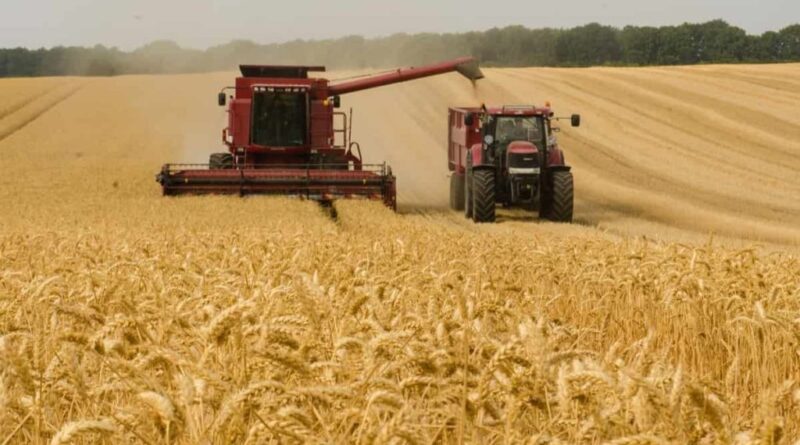Wheat Supplies Set to Expand With Record North Dakota Yields
By Bloomberg
Record-high wheat yields in North Dakota are set to further expand American grain supplies and should help to quell inflation for foods like bagels, where prices had recently started rising again.
Dozens of wheat traders, millers and bakers fanned out across the state in an annual crop tour this week. They found lush wheat fields — thick with tall, green plants. Farmers enjoyed a speedy spring sowing season and ample rainfall in May and June, before a recent turn to hot and dry weather.
The primary variety grown in the state of hard red spring wheat should yield 54.5 bushels per acre, according to the tour’s final data Thursday. That’s up 15% from last year and just below the US Department of Agriculture’s projection earlier this month of 56 bushels per acre — the highest ever. The tour estimate would also mean the state’s highest yield ever.
“This is as good as we’ve had for the number,” said Dave Green, executive vice president of the Wheat Quality Council, which hosts the crop tour.
American farmers have been reaping bumper grain crops, helping to buffer global supplies. Top exporter Russia will see a smaller harvest than last year, while brutal heat in the European Union will hit yields for wheat and corn.
North Dakota vies with Kansas as the top US grower.
Kansas’ just-harvested crop of wheat planted in the winter that also was bigger than last year. North Dakota should gather even more wheat, both the high-gluten spring wheat variety used to make stretchy dough for foods like bagels and pizza, as well as durum wheat prized by pasta makers.
Plentiful US supplies have benchmark Chicago futures trading near the lowest levels since 2020. Bigger stockpiles and cheaper grain are welcomed by food manufacturers who had been struggling with years of reduced US plantings and the record-high prices that followed Russia’s invasion of Ukraine in 2022. Just a year ago, wheat was coming to the US from Poland to make up for a shortfall.
Still, while wheat futures are on track for a monthly decline of more than 5% in July, prices for foods made from the staple grain are still relatively expensive. Earlier in July, the US Labor Department said its food index climbed amid gains in the baked-goods category even as broader inflation pressures were easing.
Wheat growers are also facing lower farm-gate prices even as costs for seeds, chemicals and equipment have stayed high.
North Dakota wheat grower Jim Pellman said he’s currently underwater on his fields, with potential crop revenue of about $300 per acre right now, compared with the roughly $450 he needs to break even. That means he’ll wait for prices to improve before selling his crop.
“We’re going to have to store,” Pellman said of his wheat.
Abundant rain and humidity have also allowed a crop fungus to thrive. Scouts saw signs of fusarium head blight, more commonly known as scab, in many fields in which grain heads appear shriveled and white or develop a pinkish, salmon hue. The fungus creates plant toxins that sicken humans and animals, and farmers are forced to take discounts at the grain elevator to account for the sub-par quality.
Scab has been an issue for years, and seed makers have worked to create varieties less prone to the fungus while many farmers apply fungicide to protect against it.
“This year, the scab conditions are so favorable that they may overwhelm all of the management,” said Anne Osborne, project manager at National Wheat Foundation, which also holds a contest for the biggest-yielding farms.
“We’re excited to see big yields,” she added. “We’re still concerned about profitability and what the impact of scab will be with the low prices and potential discounts.”
This article has been republished from The Livemint.

